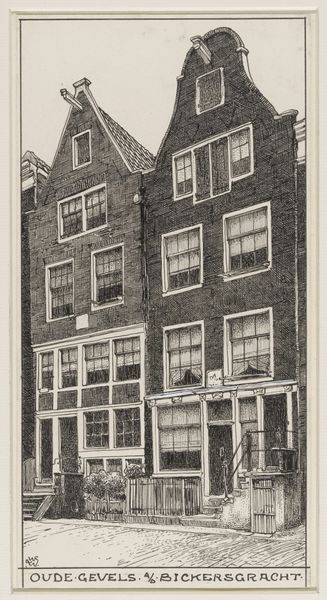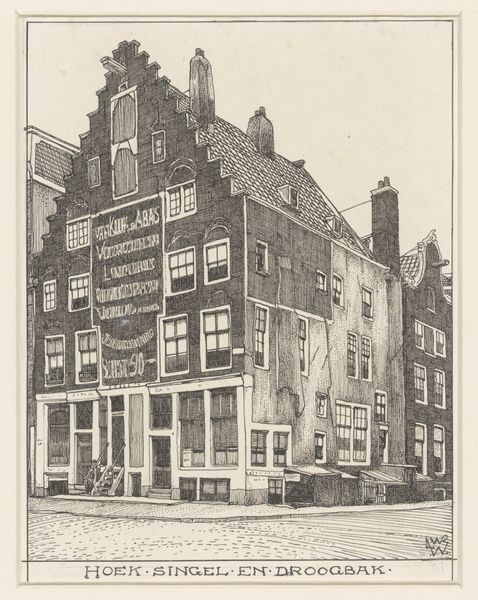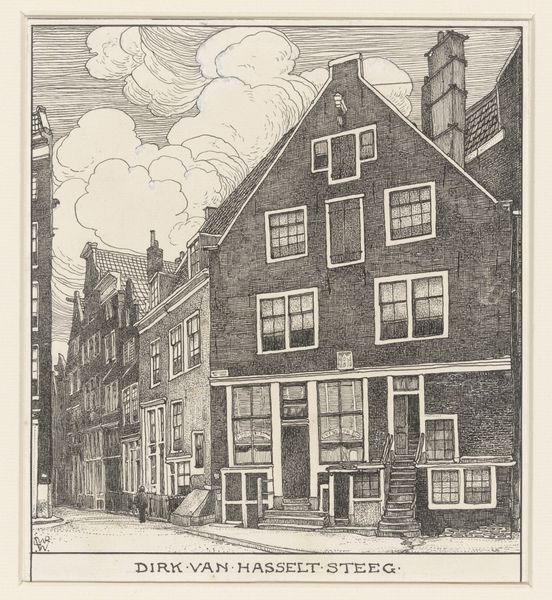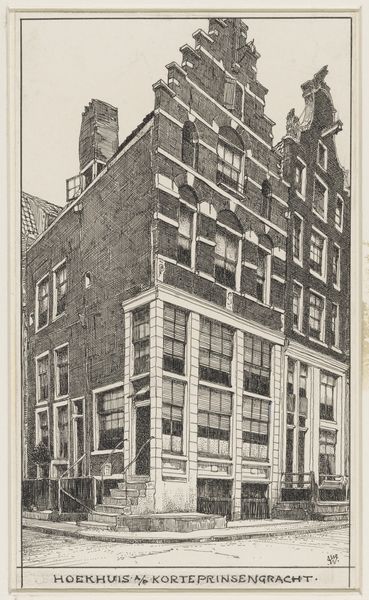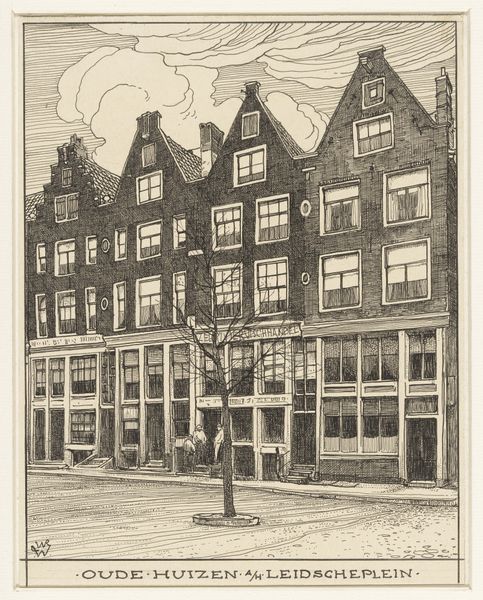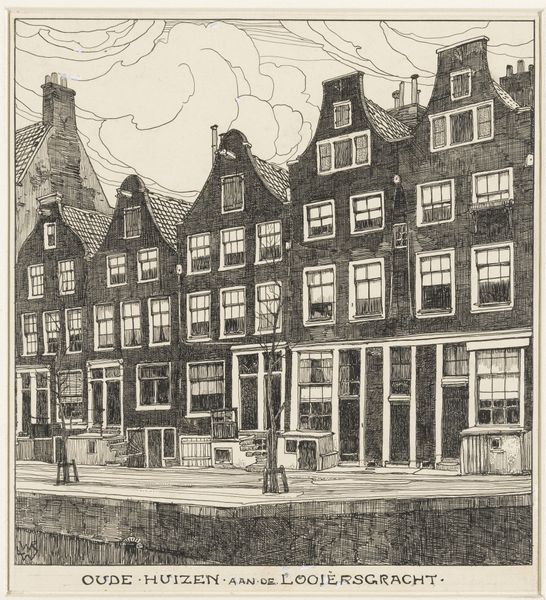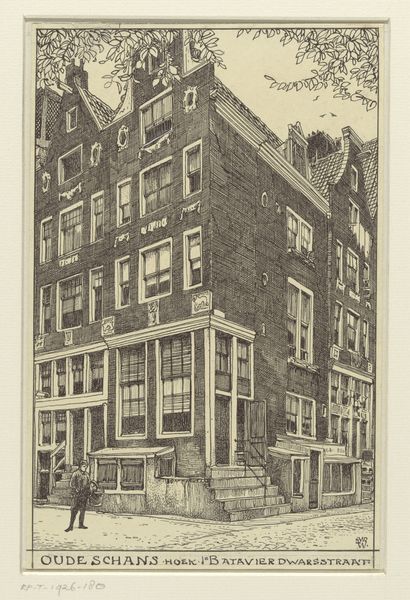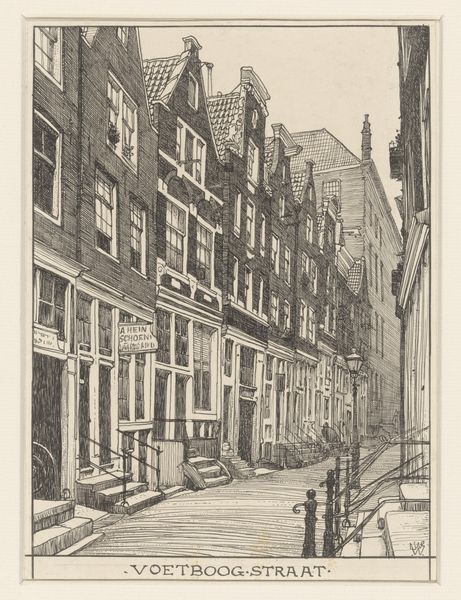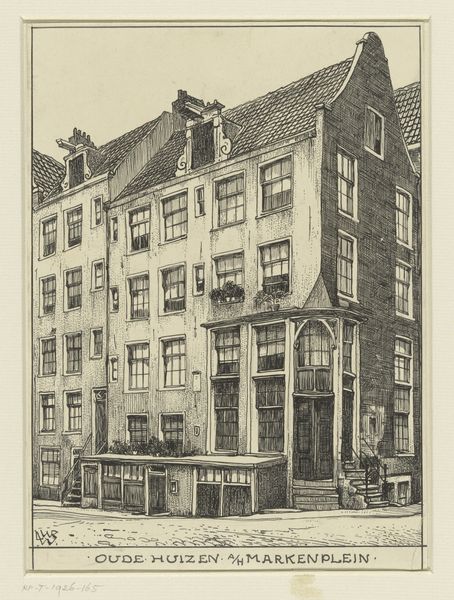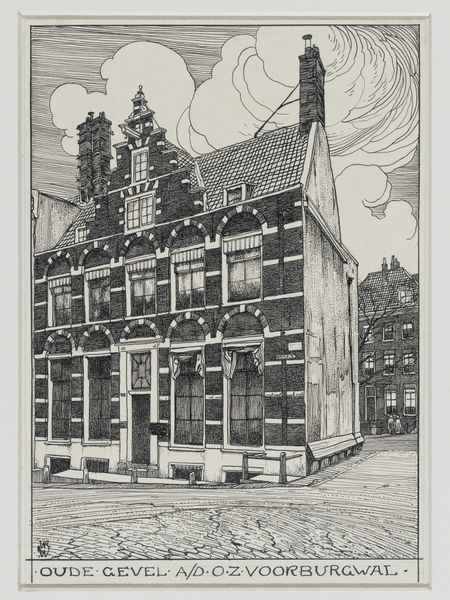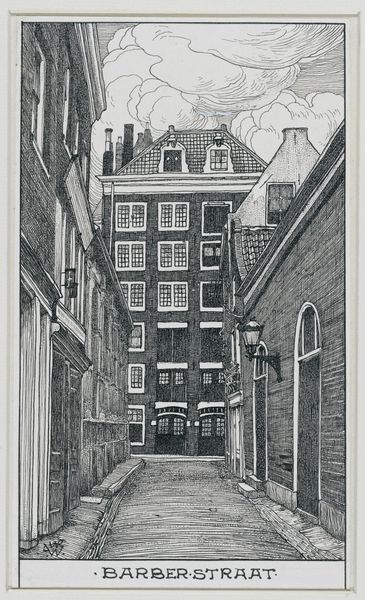
drawing, paper, ink
#
drawing
#
dutch-golden-age
#
paper
#
ink
#
cityscape
#
realism
Dimensions: height 205 mm, width 145 mm
Copyright: Rijks Museum: Open Domain
Curator: This ink drawing on paper, entitled "Het Rijpen Hofje te Amsterdam," presents a detailed view of an Amsterdam almshouse. It's from the collection of the Rijksmuseum and was created between 1870 and 1926 by Willem Wenckebach. The depiction reminds me of architectural models from the Dutch Golden Age. Editor: It feels remarkably precise. The repetition of windows, the subtle variations in the facades... you can almost hear the clip-clop of wooden shoes on the cobblestones. I immediately think about the tools involved in creating such linear precision and if there were certain standard sizes that influenced the proportions of the design, how the means to reproduce that, with ink, makes a difference to the whole scene. Curator: The image does feel rather self-contained and tranquil. There’s an underlying symbolism to this almost austere rendering, and while very plain it also presents some interesting emblems such as the stepped gables that adorn many Dutch buildings. Those details seem very deliberate choices, perhaps pointing towards civic pride, but what do you make of the figure on the street? Editor: Good eye, but as for the figure, look how they're smaller scale which really emphasize the magnitude of the architecture. I want to investigate that further: were the urban spaces in 19th century Holland planned for humans or their possessions? Considering it's a cityscape, it may tell us of industrialization processes: the social context within cityscapes is revealed through materiality. How the street serves as a link or barrier and whose interests influenced the placement and production. Curator: Interesting angle. However, from a symbolic point, that single person adds a crucial point of focus; in its time almshouses or "hofjes" embodied ideals of community and charitable works; but I believe Wenckebach's meticulous illustration speaks to something else beyond community alone. He's telling a broader tale of tradition. Editor: Sure but it feels almost contradictory! This precise mode of rendering, of documentation through reproducible means, that disrupts the historical timeline while creating something new. The paper substrate upon which the ink settles speaks of transformation, its consumption a step in perpetuating these emblems that you talk of! Curator: Ultimately, both interpretations circle the sense of capturing, or re-capturing, moments in time; where symbols become a physical representation of what matters throughout history. Editor: I'd agree! Thinking about that process offers ways into better seeing those elements you raised, which is something.
Comments
No comments
Be the first to comment and join the conversation on the ultimate creative platform.
